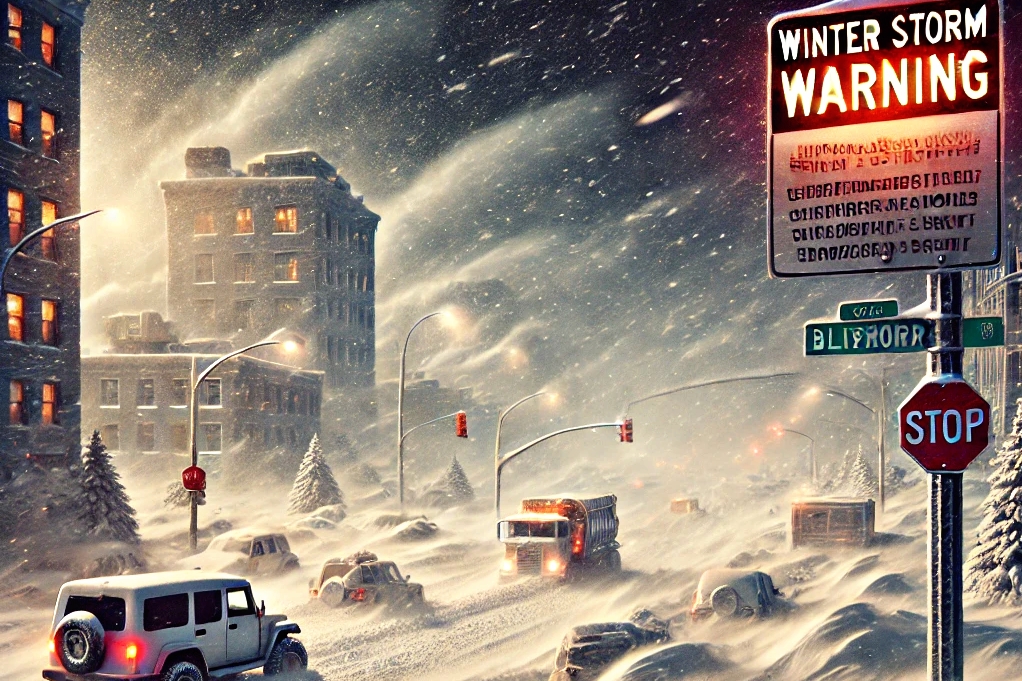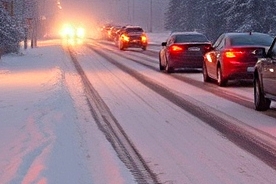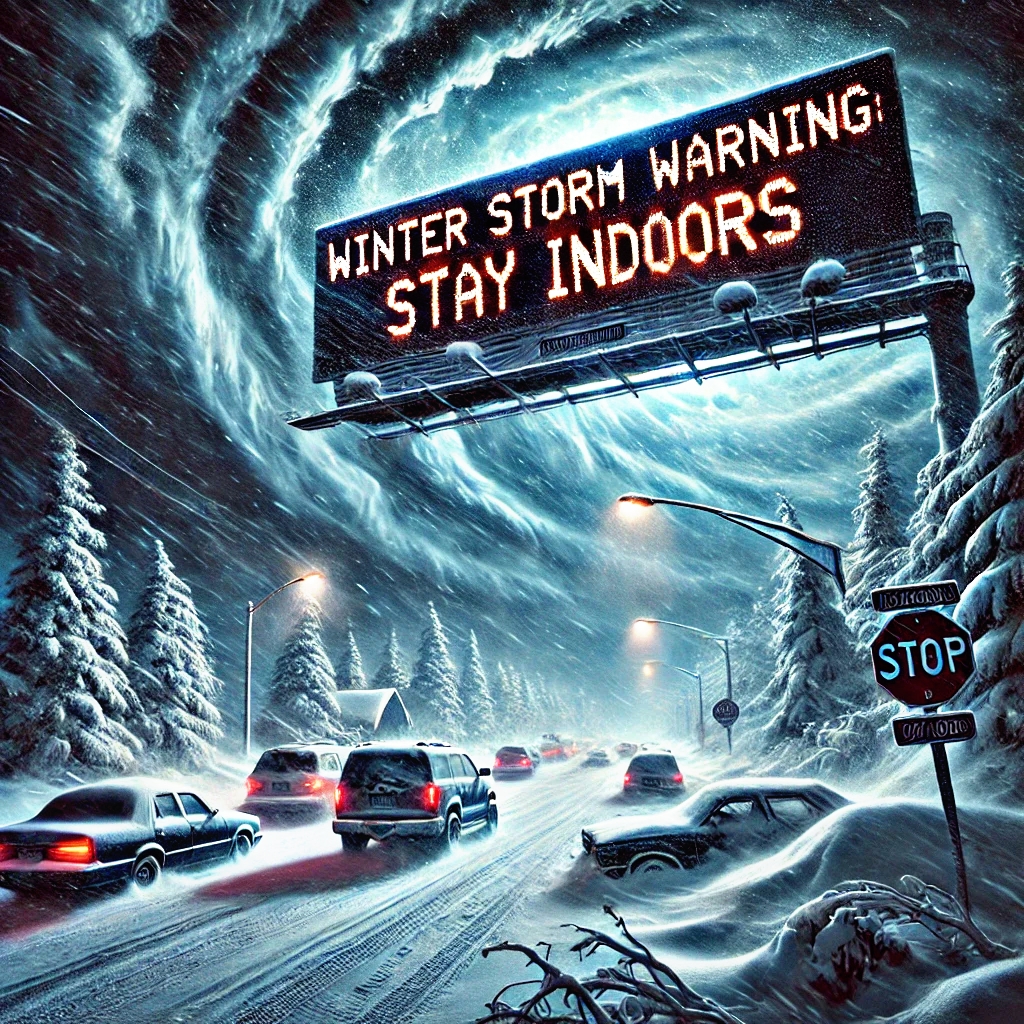Winter is a season of beauty and wonder, with snow-capped landscapes and frosty air that invokes a sense of magic. However, along with its serene charm comes the harsh reality of winter storms, which can disrupt daily life and pose significant dangers. A winter storm warning is more than just an alert; it is a critical message urging people to take precautions to ensure their safety. This article delves into the essence of a winter storm warning, its implications, and how to stay safe during these weather events.
What Is a Winter Storm Warning?
A winter storm warning is issued by meteorological agencies, such as the National Weather Service (NWS) in the United States, to inform the public about impending severe winter weather conditions. This warning indicates that heavy snowfall, freezing rain, or sleet is expected, which can lead to hazardous travel, power outages, and life-threatening conditions.
While a winter weather advisory might highlight less severe winter conditions, a winter storm warning signals a more intense storm that requires immediate attention and preparation. These warnings are typically issued 12 to 36 hours before the storm’s arrival, giving people time to prepare.
Components of a Winter Storm Warning

A winter storm warning typically encompasses several elements, depending on the severity and nature of the storm. These include:
- Heavy Snowfall: The forecast may predict snow accumulation of several inches within a short period, leading to reduced visibility and dangerous driving conditions.
- Ice Accumulation: Freezing rain can coat roads, trees, and power lines, making movement treacherous and increasing the risk of power outages.
- Blizzard Conditions: In some cases, high winds accompany the snow, creating blizzard-like conditions with near-zero visibility and severe wind chills.
- Mixed Precipitation: A combination of snow, sleet, and freezing rain can make conditions highly unpredictable and hazardous.
The Difference Between Watches, Warnings, and Advisories
It’s essential to understand the distinctions between different winter weather alerts:
- Winter Storm Watch: Issued when severe winter weather is possible within the next 48 hours. This is a heads-up to begin preparing.
- Winter Weather Advisory: Highlights less severe winter conditions that may still cause inconveniences but are not life-threatening.
- Winter Storm Warning: Indicates severe winter weather is imminent or already occurring. Immediate action is needed to ensure safety.
Why Winter Storm Warnings Are Critical

Ignoring a winter storm warning can lead to dire consequences. Severe winter storms can bring life to a standstill, causing widespread disruptions and endangering lives. Here’s why paying attention to these warnings is crucial:
- Travel Hazards: Icy roads, reduced visibility, and snowdrifts make driving extremely dangerous.
- Health Risks: Hypothermia and frostbite are significant concerns during prolonged exposure to cold temperatures.
- Power Outages: Heavy snow and ice can bring down power lines, leaving homes without heat or electricity for days.
- Economic Impact: Winter storms can disrupt supply chains, close businesses, and lead to substantial economic losses.
Preparing for a Winter Storm Warning
Preparation is key to surviving and minimizing the impact of a winter storm. Here’s a comprehensive guide to getting ready once a winter storm warning is issued:
1. Stock Up on Essentials
Ensure you have enough food, water, and medications to last several days. Non-perishable items like canned goods and bottled water are ideal.
2. Create an Emergency Kit
An emergency kit should include flashlights, batteries, blankets, a first aid kit, and a battery-operated radio.
3. Winterize Your Home
- Insulate pipes to prevent freezing.
- Seal windows and doors to retain heat.
- Ensure you have alternative heating options, such as a generator or wood stove.
4. Prepare Your Vehicle
- Keep your gas tank full to prevent the fuel line from freezing.
- Equip your car with a winter survival kit, including a shovel, ice scraper, blankets, and sand or cat litter for traction.
5. Stay Informed
Monitor weather updates through reliable sources. When a winter storm warning is issued, follow local news or weather apps for real-time updates.
During a Winter Storm Warning

Once the storm begins, taking proactive measures can ensure your safety:
1. Stay Indoors
Avoid unnecessary travel. If you must go outside, dress in layers and cover exposed skin to prevent frostbite.
2. Maintain Communication
Keep your phone charged and have backup power sources available. Check on neighbors, especially the elderly or disabled.
3. Conserve Heat
Close off unused rooms to conserve heat and use blankets to insulate windows and doors.
4. Avoid Overexertion
Shoveling snow can be physically demanding and increase the risk of heart attacks. Take breaks and use proper techniques.
5. Be Cautious with Alternative Heating
If using generators or portable heaters, ensure proper ventilation to prevent carbon monoxide poisoning.
Common Misconceptions About Winter Storm Warnings
Despite their importance, winter storm warnings are sometimes misunderstood or underestimated. Let’s address some common misconceptions:
- “It’s just snow; it can’t be that dangerous.”
Snowstorms can cause accidents, strand travelers, and create life-threatening conditions, even for the well-prepared. - “The warning will probably be wrong.”
While forecasts may not always be precise, it’s better to prepare for the worst than to be caught off guard. - “I don’t need to prepare; I’ve dealt with storms before.”
Every storm is different. Ignoring a winter storm warning could leave you unprepared for unexpected challenges.
The Role of Technology in Winter Storm Warnings
Advancements in meteorology and technology have significantly improved the accuracy and dissemination of winter storm warnings. Here’s how technology plays a role:
- Advanced Weather Models: Meteorologists use sophisticated computer models to predict storms with greater precision.
- Mobile Alerts: Smartphones receive real-time weather alerts, ensuring people are informed instantly.
- Social Media: Platforms like Twitter and Facebook allow meteorological agencies to share updates rapidly.
Famous Winter Storms That Highlight the Importance of Warnings
History provides numerous examples of devastating winter storms that underscore the importance of heeding a winter storm warning:
- The Great Blizzard of 1888: One of the most severe blizzards in U.S. history, it paralyzed the Northeast and caused over 400 fatalities.
- The Storm of the Century (1993): This massive storm affected 26 states, causing widespread damage and loss of life.
- Winter Storm Uri (2021): A powerful storm that caused widespread power outages and water crises in Texas and other states.
After the Storm: Recovery and Moving Forward
Once the storm subsides, the focus shifts to recovery:
- Clear Snow Safely: Use proper techniques to clear driveways and sidewalks, taking care not to overexert yourself.
- Inspect Your Property: Check for damage to roofs, pipes, and electrical systems.
- Replenish Supplies: Restock your emergency kit in preparation for future storms.
Final Thoughts on Winter Storm Warnings
A winter storm warning is not just a weather update; it’s a call to action. By understanding the risks, preparing adequately, and taking appropriate precautions, you can protect yourself and your loved ones during severe winter weather.
The next time you see a winter storm warning, remember that it’s a lifeline designed to keep you safe. Treat it with the seriousness it deserves, and you’ll be better equipped to weather the storm.
Winter storms may bring beauty, but they also demand respect. By heeding warnings, staying informed, and preparing thoroughly, you can navigate even the harshest winter conditions with confidence.

